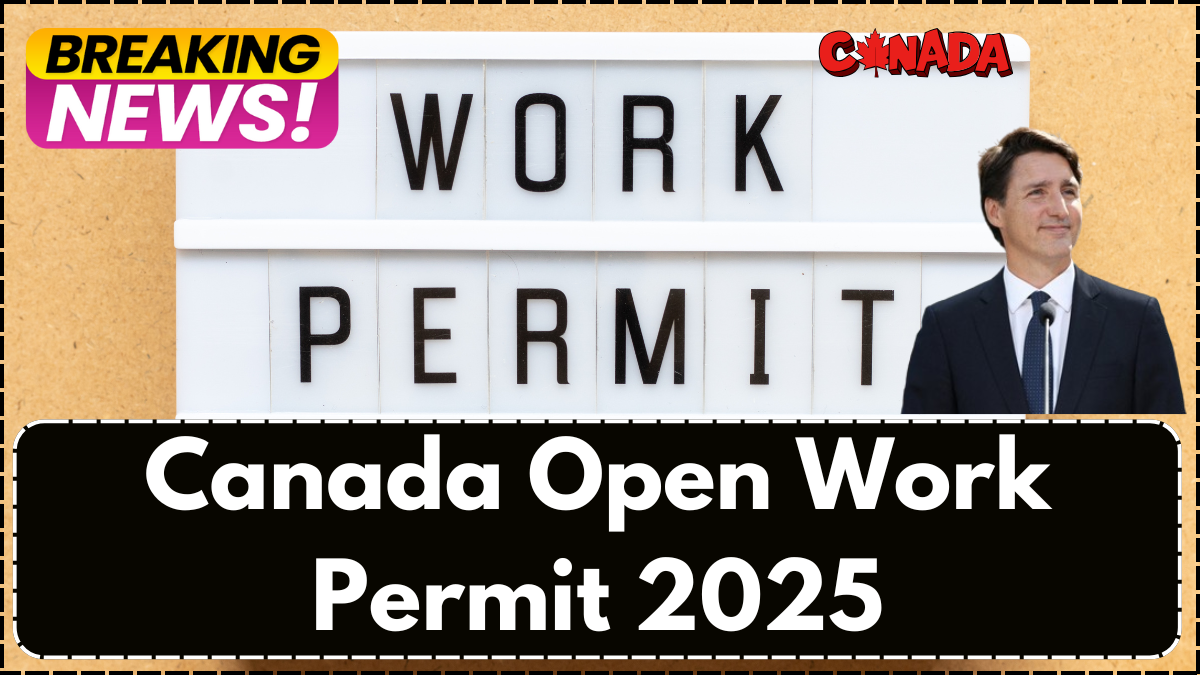Canada’s Open Work Permit (OWP) program provides foreign nationals the opportunity to work for any employer across the country without being bound to a specific job offer. This flexibility is particularly advantageous for international graduates, spouses of skilled workers or students, and certain individuals awaiting permanent residency.
As of April 2025, the application process has been refined to simplify eligibility criteria and expedite processing. Below is a comprehensive guide detailing everything you need to know about the updated program, including eligibility, application procedures, and recent changes.

What is an Open Work Permit?
An Open Work Permit allows the holder to work for almost any employer in Canada, except in cases where specific employment restrictions apply, such as jobs in industries related to health and security. Unlike employer-specific work permits, which require a job offer and employer sponsorship, an OWP offers flexibility and ease of movement within the Canadian job market.
This permit is particularly beneficial for individuals such as:
- International graduates who have completed eligible programs.
- Spouses or common-law partners of skilled workers or students.
- Permanent residency applicants awaiting a decision on their status.
Eligibility Criteria for an Open Work Permit
The eligibility requirements for an OWP depend on the applicant’s category. Below is a breakdown of the major groups who can apply:
1. Post-Graduation Work Permit (PGWP) Applicants
- Must have completed a program of at least eight months at a Designated Learning Institution (DLI).
- A valid study permit should have been held during the course of study.
- Application must be submitted within 180 days of receiving the final academic results.
2. Spouses or Common-Law Partners of Skilled Workers
- The principal applicant must be employed in a high-skilled occupation classified under TEER 0, 1, and certain TEER 2 and 3 categories.
- The skilled worker’s work permit must have at least 16 months of validity remaining at the time of the OWP application.
3. Spouses or Common-Law Partners of International Students
- The international student must be enrolled in a Master’s, PhD, or select professional degree program.
- As of January 2025, dependent children are no longer eligible for an Open Work Permit under this category.
Also Read: Canada Workers Benefit (CWB): A Complete Guide to the $566 Advance Payment in February 2025
Step-by-Step Application Process
The process for obtaining an Open Work Permit involves multiple steps, which are outlined below:
Step 1: Determine Eligibility
Before applying, ensure you meet the required eligibility criteria based on your category.
Step 2: Gather Required Documents
Applicants must prepare the following documents:
- A valid passport
- Passport-sized photographs
- Proof of status in Canada (if applying from within the country)
- Supporting documents (e.g., graduation certificate, marriage certificate, or partner’s work permit)
Step 3: Submit the Application Online
- Applications are submitted through the Immigration, Refugees, and Citizenship Canada (IRCC) website.
- Applicants must complete the necessary forms, upload the required documents, and pay the applicable fees.
- Processing times vary, so early submission is recommended.
Step 4: Receive Decision and Permit Issuance
- If applying from outside Canada, successful applicants will receive a Port of Entry (POE) Letter of Introduction to present upon arrival.
- If applying from within Canada, the work permit will be mailed to the applicant’s Canadian address.
Recent Changes and Key Considerations
In January 2025, the Canadian government introduced significant changes to family-based Open Work Permits. Here are the key updates:
| Change | Previous Rule | Updated Rule (2025) |
|---|---|---|
| Spouses of skilled workers | No specific employment requirements | Partner must work in a qualifying TEER 0, 1, 2, or 3 occupation |
| Spouses of international students | Open to all levels of students | Only those in Master’s, PhD, or select professional programs are eligible |
| Dependent children | Eligible under family-based OWP | No longer eligible |
These updates are designed to ensure that work permits align with Canada’s economic and labor market needs.
Final Thoughts
Canada’s Open Work Permit program is an excellent opportunity for foreign nationals to gain valuable work experience without employment restrictions. With the recent policy updates, applicants must carefully review their eligibility and ensure they meet the new criteria before applying. By understanding the process, gathering the necessary documents, and submitting applications on time, foreign workers can maximize their chances of successfully obtaining an OWP and contributing to Canada’s economy.
For the latest updates and detailed application guidelines, always refer to the official Immigration, Refugees, and Citizenship Canada (IRCC) website.
Frequently Asked Questions (FAQs)
1. Can I apply for an Open Work Permit without a job offer?
Yes. Unlike employer-specific work permits, an OWP does not require a job offer.
2. How long does it take to process an Open Work Permit?
Processing times vary, but applications typically take between 4 to 6 months. It is recommended to apply as early as possible to avoid delays.
3. Can I extend my Open Work Permit?
Extensions depend on your permit type. For example, PGWP holders cannot extend their permits, but they may be eligible for a Bridging Open Work Permit (BOWP) if applying for permanent residency.
4. Do I need to undergo a medical exam for an Open Work Permit?
Medical exams may be required for applicants who plan to work in healthcare, child care, or agriculture sectors.
5. Can I switch to an employer-specific work permit later?
Yes. If you secure a job with an employer willing to sponsor you, you can apply for an employer-specific work permit through the Labour Market Impact Assessment (LMIA) process.
For More Information Click Here
Akesh is a furniture expert with years of experience in design and craftsmanship. Specializing in sustainable materials, he shares his expertise to help people create stylish and functional living spaces.
